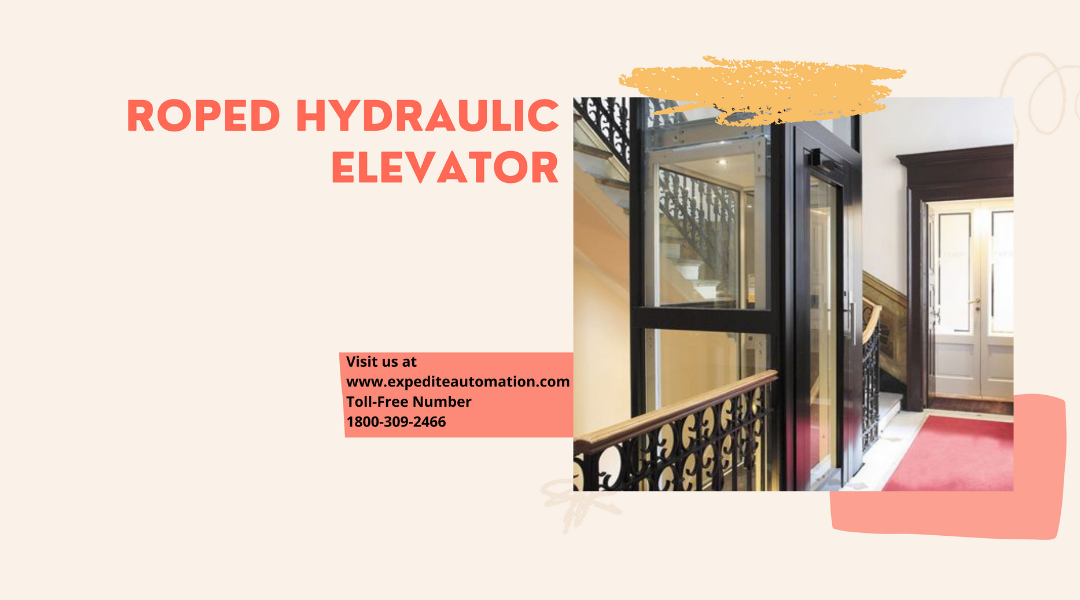Roped hydraulic elevators hoist the elevator vehicle with the help of both a hydraulic jack and a cable. As a result, it delivers a smooth hydraulic elevator ride without the need to excavate a large hole in the ground. The hydraulic jack, which is a crucial component, is situated between the rails. A hydraulic pump, piston, and pulley are commonly used in the mechanism. To connect everything together, a pulley and lifting cables are linked to the jack. When compared to conventional elevators, the roped hydraulic elevator has a modest depth requirement. They feature a straightforward design that is simple to install and maintain.

Advantages:
Some of the main advantages of roped hydraulic elevator system are as follows: –
The dual, single-stage design employs a standard hoistway size, making it significantly more cost-effective than its competitors.
Hydraulic elevators for mid-to high-rise structures feature designs that allow them to move over 100 feet without requiring a deep pit, making them suitable for residential and low-rise buildings.
The roped construction allows the elevator cab to go twice as far with the same hydraulic cylinder movement, limiting Pit Depth and Overhead Height.
They are simple to install and easier to maintain.
To save money and make installation easier, the systems are sub-assembled.
As a result, roped hydraulic elevator systems are regarded as the ideal lift system for meeting the client’s demand for a modern lifting system. It doesn’t matter if you have the necessary space; it may be customized to meet your specific needs. It not only saves electricity, but it also reduces the amount of heat and noise generated. The counterbalance mechanism ensures a more comfortable and quiet ride every time. To satisfy current vertical demands, we provide a variety of rope hydraulic lifts. To learn more, contact our elevator experts today.



